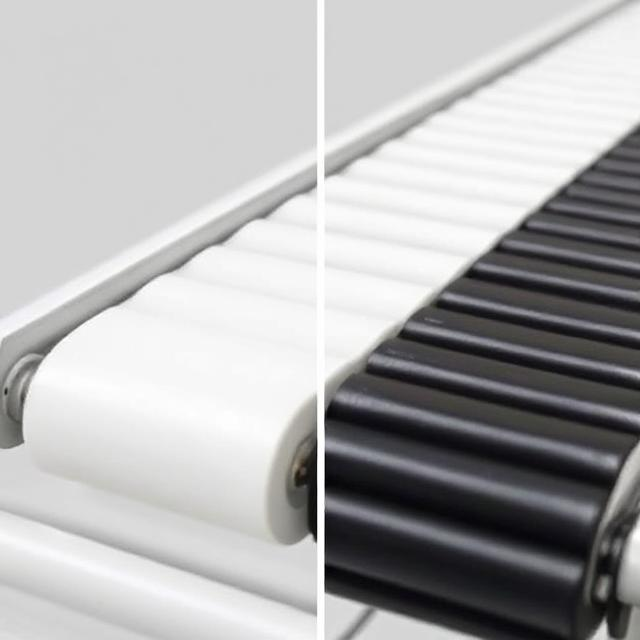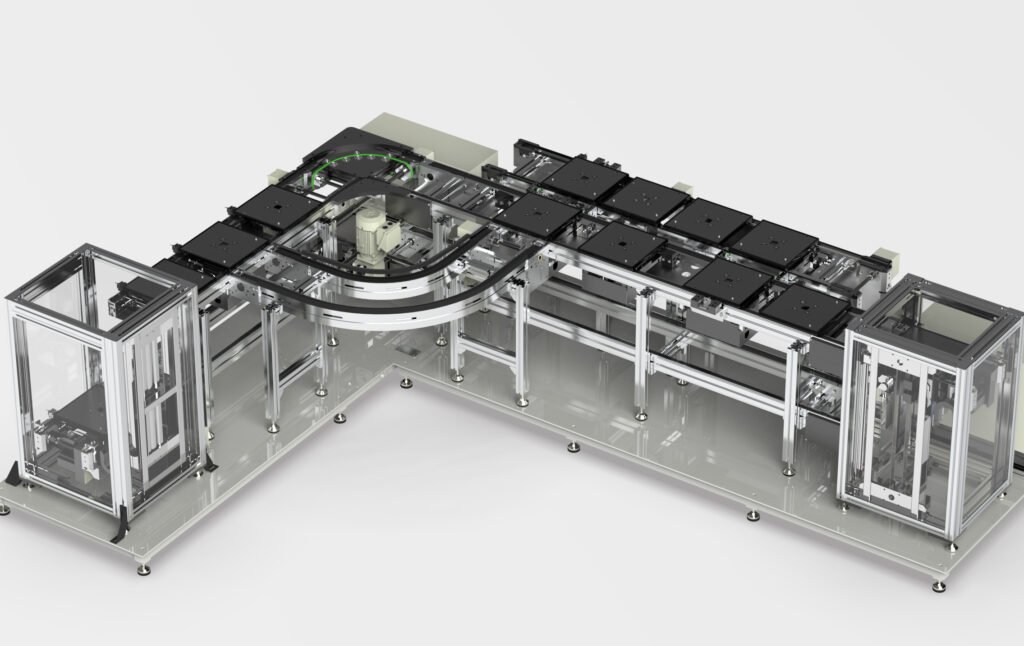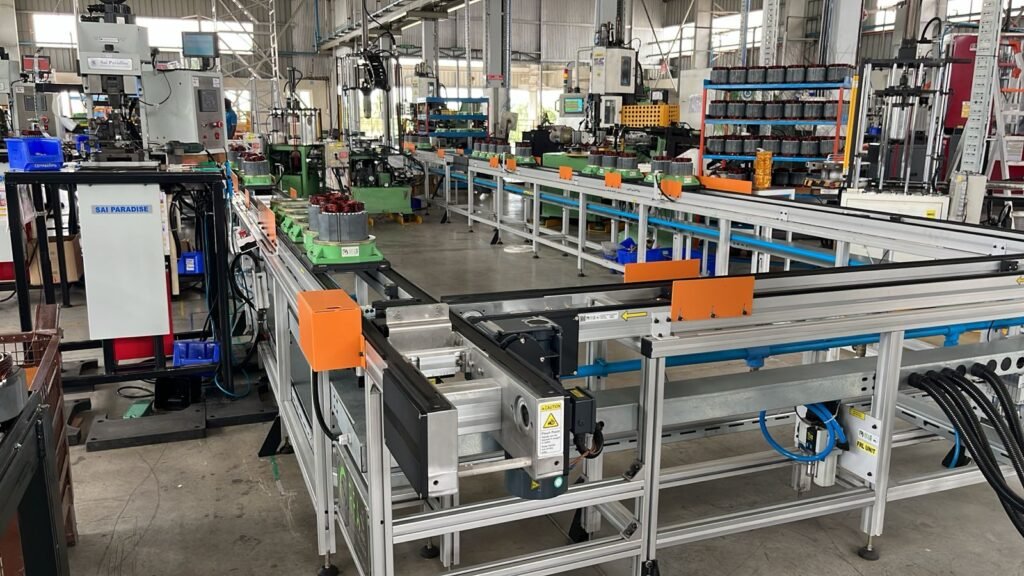目次
- はじめに
- Understanding PVC and Rubber Conveyor Belts
- What is a PVC Conveyor Belt?
- What is a Rubber Conveyor Belt?
- Key Differences Between PVC and Rubber Conveyor Belts
- 素材構成
- Durability and Strength
- Flexibility and Elasticity
- Resistance to Chemicals and Moisture
- Temperature Resistance
- Maintenance and Lifespan
- Cost Considerations
- Best Applications for PVC and Rubber Conveyor Belts
- Vitrans: High-Quality Conveyor Systems
- 結論
- 総括表
はじめに
When choosing a conveyor belt for industrial production, manufacturing, logistics, or material handling, two of the most common materials are PVC(ポリ塩化ビニル) and rubber. Both have their strengths and weaknesses, making it crucial to understand which is better suited for your application.
In this article, we will compare PVC and rubber conveyor belts, highlight their differences, and help you determine the best option for your needs.

Understanding PVC and Rubber Conveyor Belts
What is a PVC Conveyor Belt?
A PVC conveyor belt is made from synthetic plastic polymer (Polyvinyl Chloride) and reinforced with polyester fabric. It is widely used in industries where light to medium loads are transported.
Key Features of PVC Conveyor Belts:
- Lightweight and flexible
- 費用対効果 compared to rubber belts
- Resistant to chemicals and moisture
- Smooth or textured surface options
What is a Rubber Conveyor Belt?
A ゴムコンベヤベルト is made from natural or synthetic rubber and reinforced with fabric or steel cords. It is commonly used in heavy-duty industries where high impact and abrasion resistance are required.
Key Features of Rubber Conveyor Belts:
- High durability and strength
- Excellent resistance to heat and heavy loads
- Flexible and absorbs shocks effectively
- Suitable for rough and abrasive materials
Key Differences Between PVC and Rubber Conveyor Belts
素材構成
- PVC belts are made of synthetic plastic materials, making them lighter その他 affordable.
- Rubber belts are made from natural or synthetic rubber, which provides better durability そして 柔軟性.
Durability and Strength
- Rubber conveyor belts は stronger and more durable, making them suitable for ヘビーデューティー・アプリケーション such as mining and construction.
- PVC conveyor belts は suitable for lighter applications, such as food processing and packaging.
Flexibility and Elasticity
- Rubber belts は more elastic, allowing them to handle high-impact loads and heavy materials.
- PVC belts は less flexible, but they perform well in applications requiring straight-line transportation.
Resistance to Chemicals and Moisture
- PVC belts は highly resistant to chemicals, oils, and moisture, making them ideal for food processing, pharmaceuticals, and packaging industries.
- Rubber belts can absorb moisture over time and may not be as resistant to certain chemicals as PVC belts.
Temperature Resistance
- Rubber conveyor belts perform well in 高温環境, such as foundries and heavy manufacturing industries.
- PVC conveyor belts 缶 degrade under high heat, making them less suitable for extreme temperature applications.
Maintenance and Lifespan
- Rubber belts 必要 more maintenance, but they last longer under heavy loads.
- PVC belts 必要 less maintenance but may wear out faster in demanding environments.
Cost Considerations
- PVC belts は 安い そして easier to install, making them a budget-friendly choice for light-duty applications.
- Rubber belts は より高い, but their longer lifespan can justify the higher initial cost.
Best Applications for PVC and Rubber Conveyor Belts
| Industry/Application | Best Choice | Reason |
|---|---|---|
| Food Processing & Packaging | PVC Conveyor Belt | Resistant to moisture and chemicals, easy to clean |
| Mining & Heavy Industry | ゴム製コンベヤベルト | Durable, strong, and resistant to impact and abrasion |
| Logistics & Warehousing | PVC Conveyor Belt | Lightweight, cost-effective, and smooth for efficient transport |
| Manufacturing & Assembly Lines | PVC or Rubber (Depends on load) | PVC for lighter loads, rubber for heavier loads |
| Automotive Industry | ゴム製コンベヤベルト | Handles high temperatures and heavy parts |
| Recycling & Waste Management | ゴム製コンベヤベルト | Withstands sharp objects and heavy loads |
Vitrans: High-Quality Conveyor Systems

ヴィトランズ は パレットコンベアのトップメーカー パレット搬送システムを超える。 経験10年 in the industry.
Vitransコンベヤシステムを選ぶ理由
✔ Proven Quality: Our conveyor systems are used in various industrial automated production and assembly lines ワールドワイドで。
✔ 競争力のある価格設定: Thanks to our rich supply chain resources in China, we offer 費用対効果の高いソリューション.
✔ 迅速な配達: Short lead times for both standard and custom conveyor systems.
✔ グローバルな輸出 Our products are exported to multiple countries.
Vitrans Conveyor System Products:
と Vitrans’ expertise in conveyor systems, businesses can achieve greater efficiency and productivity with the right belt choice.
結論
Choosing between a PVC and rubber conveyor belt depends on the specific needs of your industry.
- For light-duty applications (e.g., food, packaging, logistics), PVC conveyor belts are a cost-effective and reliable choice.
- For heavy-duty applications (e.g., mining, construction, recycling), rubber conveyor belts offer greater durability and resistance to wear and tear.
と Vitrans’ high-quality conveyor systems, businesses can select the best conveyor belt to optimize their production and material handling processes.
総括表
| 特徴 | PVC Conveyor Belt | ゴム製コンベヤベルト |
|---|---|---|
| 素材 | Synthetic Plastic | Natural or Synthetic Rubber |
| 耐久性 | ミディアム | 高い |
| Strength | Light to Medium Loads | Heavy Loads |
| 柔軟性 | Less Flexible | Highly Flexible |
| Chemical Resistance | 高い | 中程度 |
| Moisture Resistance | 高い | Can Absorb Moisture |
| Temperature Resistance | 低い | 高い |
| メンテナンス | 低い | 中~高 |
| コスト | Lower | Higher |
| 最適 | Food, Packaging, Logistics | Mining, Recycling, Heavy Industry |
By understanding these key differences, businesses can make an informed decision when selecting a conveyor belt for their needs.



